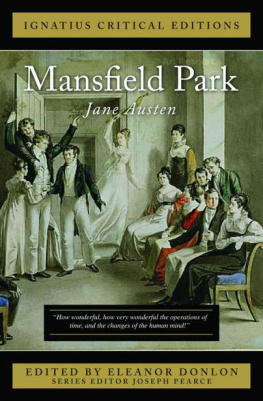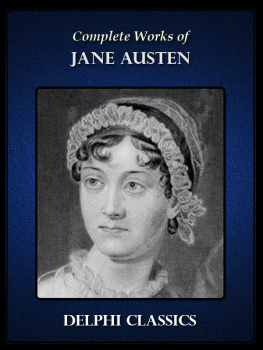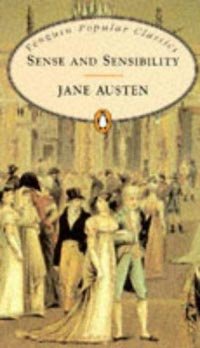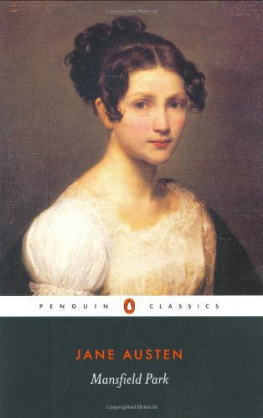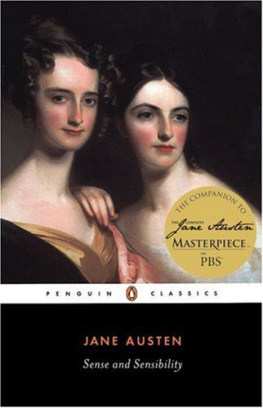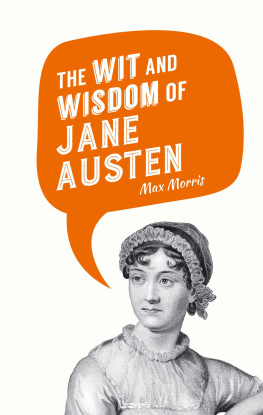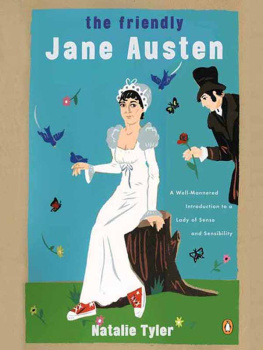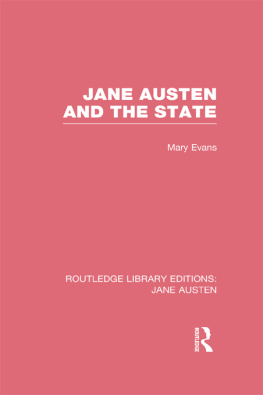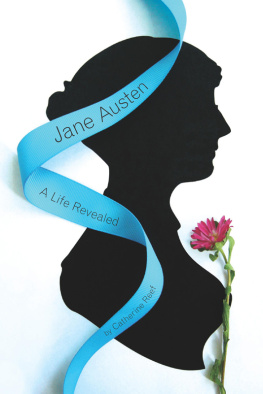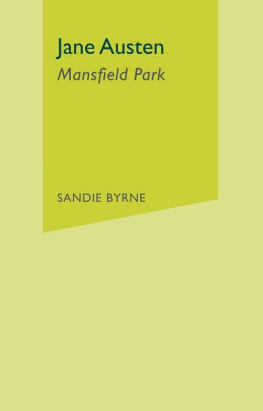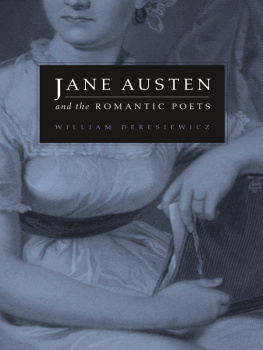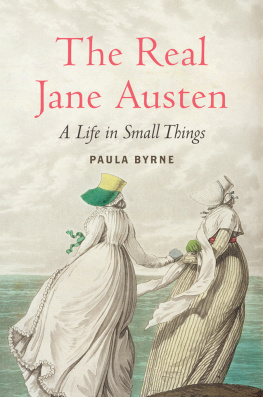Jane Austen - Sanditon
Here you can read online Jane Austen - Sanditon full text of the book (entire story) in english for free. Download pdf and epub, get meaning, cover and reviews about this ebook. year: 2019, publisher: Oxford University Press, genre: Art. Description of the work, (preface) as well as reviews are available. Best literature library LitArk.com created for fans of good reading and offers a wide selection of genres:
Romance novel
Science fiction
Adventure
Detective
Science
History
Home and family
Prose
Art
Politics
Computer
Non-fiction
Religion
Business
Children
Humor
Choose a favorite category and find really read worthwhile books. Enjoy immersion in the world of imagination, feel the emotions of the characters or learn something new for yourself, make an fascinating discovery.
- Book:Sanditon
- Author:
- Publisher:Oxford University Press
- Genre:
- Year:2019
- Rating:4 / 5
- Favourites:Add to favourites
- Your mark:
- 80
- 1
- 2
- 3
- 4
- 5
Sanditon: summary, description and annotation
We offer to read an annotation, description, summary or preface (depends on what the author of the book "Sanditon" wrote himself). If you haven't found the necessary information about the book — write in the comments, we will try to find it.
Sanditon — read online for free the complete book (whole text) full work
Below is the text of the book, divided by pages. System saving the place of the last page read, allows you to conveniently read the book "Sanditon" online for free, without having to search again every time where you left off. Put a bookmark, and you can go to the page where you finished reading at any time.
Font size:
Interval:
Bookmark:

SANDITON
Jane Austen was born in 1775 in the village of Steventon, Hampshire, the daughter of an Anglican clergyman. The Austens were cultured but not at all rich, though one of Austens brothers was adopted by a wealthy relative. Other brothers followed professional careers in the church, the Navy, and banking. With the exception of two brief periods away at school, Austen and her elder sister Cassandra, her closest friend and confidante, were educated at home. Austens earliest surviving work, written at Steventon while still in her teens, is dedicated to her family and close female friends. Between 1801 and 1809 Austen lived in Bath, where her father died in 1805, and in Southampton. In 1809, she moved with her mother, Cassandra, and their great friend Martha Lloyd to Chawton, Hampshire, her home until her death at Winchester in 1817. During this time, Austen published four of her major novels: Sense and Sensibility (1811), Pride and Prejudice (1813), Mansfield Park (1814), and Emma (1816), visiting London regularly to oversee their publication. Her two final novels, Persuasion and Northanger Abbey, were published posthumously in 1818. Sanditon, a new novel, was left unfinished at the time of her death.
Kathryn Sutherland is Professor of English Literature and Senior Research Fellow, St Annes College, Oxford. Her recent publications include Jane Austens Textual Lives: From Aeschylus to Bollywood (2005) and, with Marilyn Deegan, Transferred Illusions: Digital Technology and the Forms of Print (2009). She is the editor of Jane Austens Fiction Manuscripts: A Digital Edition (2010) and the expanded print edition, 5 vols (2018). In the Oxford Worlds Classics series she has also published editions of Walter Scotts Redgauntlet and Waverley, of Adam Smiths An Inquiry into the Nature and Causes of the Wealth of Nations, of James Edward Austen-Leighs A Memoir of Jane Austen and Other Family Recollections, and of Jane Austens Teenage Writings.
For over 100 years Oxford Worlds Classics have brought readers closer to the worlds great literature. Now with over 700 titlesfrom the 4,000-year-old myths of Mesopotamia to the twentieth centurys greatest novelsthe series makes available lesser-known as well as celebrated writing.
The pocket-sized hardbacks of the early years contained introductions by Virginia Woolf, T. S. Eliot, Graham Greene, and other literary figures which enriched the experience of reading.
Today the series is recognized for its fine scholarship and reliability in texts that span world literature, drama and poetry, religion, philosophy and politics. Each edition includes perceptive commentary and essential background information to meet the changing needs of readers.

Great Clarendon Street, Oxford, ox 2 6 dp , United Kingdom
Oxford University Press is a department of the University of Oxford. It furthers the Universitys objective of excellence in research, scholarship, and education by publishing worldwide. Oxford is a registered trade mark of Oxford University Press in the UK and in certain other countries
Editorial material Kathryn Sutherland 2019
The moral rights of the author have been asserted
First published as an Oxford Worlds Classics paperback 2019
Impression: 1
All rights reserved. No part of this publication may be reproduced, stored in a retrieval system, or transmitted, in any form or by any means, without the prior permission in writing of Oxford University Press, or as expressly permitted by law, by licence or under terms agreed with the appropriate reprographics rights organization. Enquiries concerning reproduction outside the scope of the above should be sent to the Rights Department, Oxford University Press, at the address above
You must not circulate this work in any other form and you must impose this same condition on any acquirer
Published in the United States of America by Oxford University Press
198 Madison Avenue, New York, NY 10016, United States of America
British Library Cataloguing in Publication Data
Data available
Library of Congress Control Number: 2019939271
ISBN 9780198840831
ebook ISBN 9780192577535
Printed and bound in Great Britain by Clays Ltd, Elcograf S.p.A.
Links to third party websites are provided by Oxford in good faith and for information only. Oxford disclaims any responsibility for the materials contained in any third party website referenced in this work.
The scene is set. A gentleman and lady (as yet unnamed) are travelling home from London to the south coast. They leave the main road to follow a rough, unmade track. Their carriage overturns. The gentleman scrambles out, helping his companion to safety. He finds he has sprained his ankle. The reason for their diversion: he is looking for a doctor. But the track leads nowhere. There is no road; there is no doctordead end on two counts. As beginnings go, this is not encouraging. As the beginning of a novel by Jane Austen, it upsets all our expectations, much like that overturned carriage. We know how her novels open, and it is not like this. Austens openings are remarkably similar: biographical, descriptive, and statica snapshot or tableau introducing a named family or family member, captured at a particular moment in their history before the action starts. Not only does this new novel open with movement, that movement is hazardous and observed with forensic detachment. Warm biographical detail is noticeably withheld. In its place, the reader is offered a police incident report: A Gentleman and Lady travelling from Tunbridge, The accident happened, their Driver, the said House, the said Proprietor (pp. 34). Only one paragraph in, we know that Sanditon will be unlike any other novel Austen wrote.
Another gentleman, Mr Heywood, a farmer, witnesses the incident and comes to the assistance of the travellers. They spend the next fortnight, while the ankle heals, among the numerous Heywood family before continuing their journey, taking with them for an extended visit Miss Charlotte Heywood, a very pleasing young woman of two and twenty (p. 14). By now we are into , the gentleman has become Mr Parker and the lady his wife, Mrs Parker, and his character, so enigmatically introduced, has been pretty much decided: he is an Enthusiast (p. 11). Mr Parkers enthusiasm (a word with a keener edge then than now) borders upon delusion and is certainly obsessive in nature. His every waking moment, all his energy, and his fortune are dedicated to Sanditon, his home and the fishing village he means to transform into a fashionable health resort. Sanditon is to Mr Parker a second wife and four Children hardly less Dearand certainly more engrossing (p. 12).
The seaside holiday was invented in the eighteenth century, with resorts springing up along Englands extensive coastline, from Blackpool and Scarborough in the north to Brighton and Lyme Regis in the south, to take advantage of the fashion for salt-water bathing. Their attractions were boosted by influential treatises like Dr Richard Russells Dissertation Concerning the Use of Sea Water, published in Latin in 1750 and quickly issued in English. Demand for his treatments (he recommended drinking as well as bathing in sea water for a range of glandular ailments) encouraged Russell to build in Brighton in the mid-1750s a substantial residence for the reception of patients. By 1800 seaside holidays were here to stay.
Font size:
Interval:
Bookmark:
Similar books «Sanditon»
Look at similar books to Sanditon. We have selected literature similar in name and meaning in the hope of providing readers with more options to find new, interesting, not yet read works.
Discussion, reviews of the book Sanditon and just readers' own opinions. Leave your comments, write what you think about the work, its meaning or the main characters. Specify what exactly you liked and what you didn't like, and why you think so.


